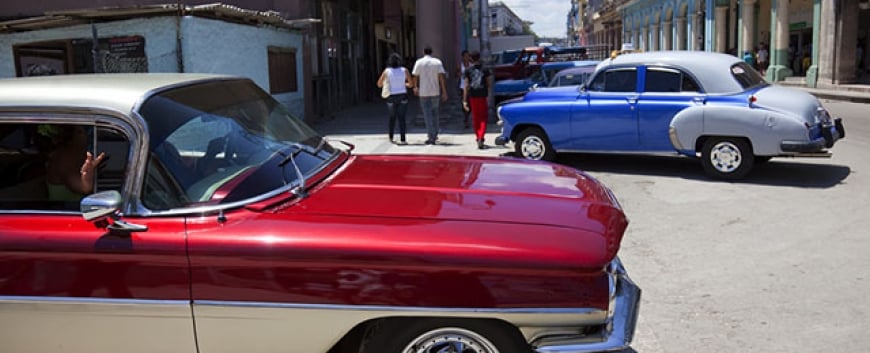Cuba’s Classic Cars
Travelers often describe visits to Cuba as trips back in time. Although many cities and villages boast centuries-old structures or streets, Cuba's classic cars—on the roads since the early 1950s—make Havana and surrounding areas look as if life came to a full stop more than half a century ago.
Why Do Cuba’s Roadways Have Classic Cars?
Cuba does boast newer cars, from nations other than the U.S. Most are government-owned, and cannot be sold. Shortly after Fidel Castro came to power in 1959, he forbade the importation of cars, and even replacement parts, without government permission. Many cars on the road at that time have been kept operational out of necessity.
New Rules of the Road
Even before President Obama's announcement that the U.S. would ease restrictions against Cuba, transportation regulations were changing to allow Cubans to buy and sell cars once more. However, prices remain prohibitive, even by American standards, for all but the island’s wealthiest citizens.
How Do Mechanics Keep Cars Driving for Decades?
People who live without many luxuries often develop uncanny ingenuity. Nowhere is this truer than in Cuba, where mechanics and tinkerers use whatever materials they can find. Old train parts have been known to replace irreparably corroded or broken auto parts, and house paint sometimes covers rusting fenders. Break fluid and other necessities can be concocted from common household ingredients. Many engines have been replaced entirely—often with their diesel counterparts, which cost less to run. Some Cubans have turned to car-restoration clubs and cooperatives, where they help one another find parts and repair their old autos.
 Old car in Havana Vieja, Cuba.
Old car in Havana Vieja, Cuba.
Fast Facts About Cars in Cuba
- Cuba has about 60,000 vintage American cars.
- Cubans often use restored cars for special celebrations. For transportation, locals get around in shabbier cabs (generally, “machinas:” unrestored older cars), and pay considerably less than tourists, who cruise in shiny vintage vehicles.
- Specially tailored tours give car-club members and auto executives a driver’s-side view of Cuba.
- Santiago de Cuba boasts the National Transportation Museum (known familiarly as “The Automobile Museum”), which houses an extensive display of miniatures, and cars once driven by notable islanders.
Text by Chelsea Lowe
Photos by Robin Thom, © all rights reserved














